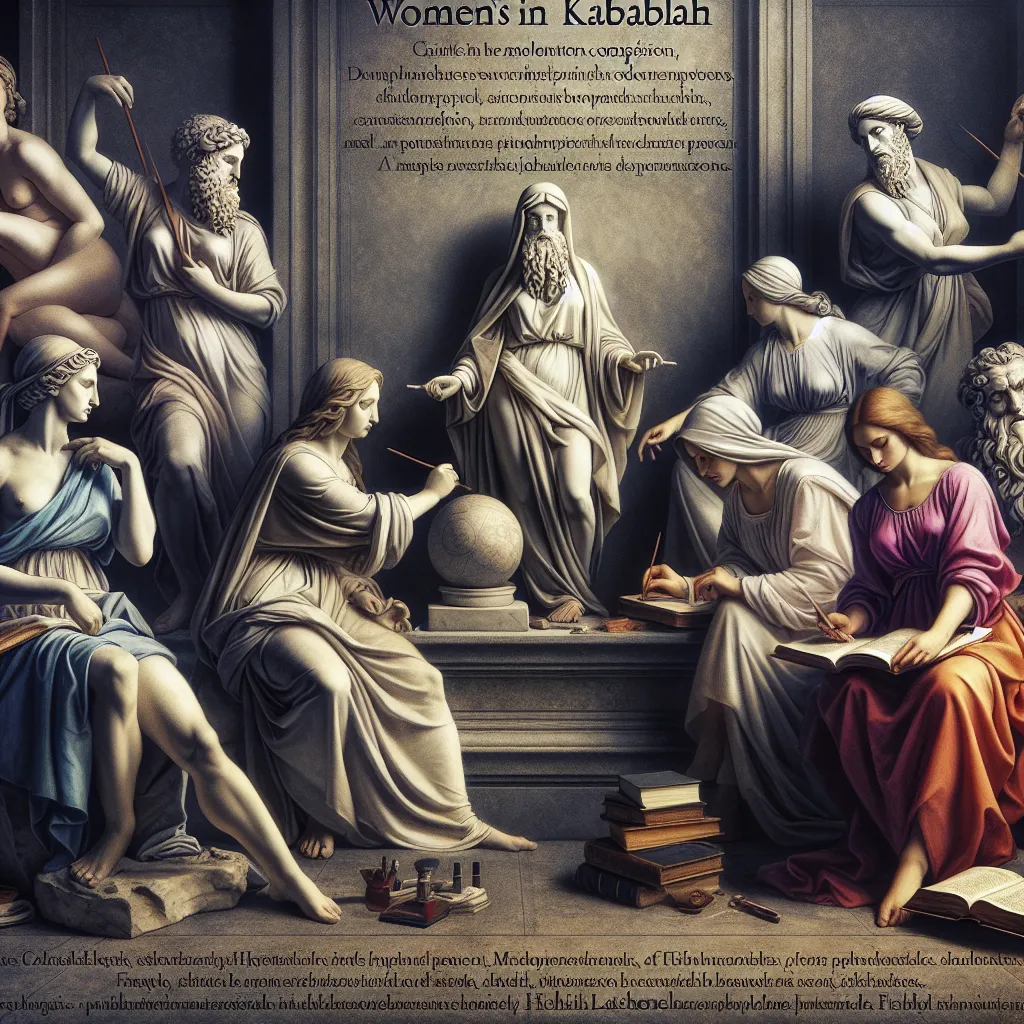
- Published on
- Authors

- Name
- You
The Role of Women in Kabbalah: Female Mystics and Scholars
Kabbalah, the mystical branch of Jewish thought, has historically been perceived as a male-dominated field. However, the contributions of female mystics and scholars have been both significant and transformative. Let us unravel the veiled history and explore the contributions of key women in Kabbalah, a journey that beautifully intersects advanced science and mystical wisdom.
Historical Context of Women in Kabbalah
While traditional Kabbalistic literature often alludes to a male-centric tradition, there have always been women who defied these confines to engage deeply with mystical practices and scholarly pursuits. This exploration combines historical records and oral traditions to illuminate their roles.
Notable Female Mystics and Scholars
Rabbanit Yuta of Baghdad (10th Century)
- Contribution: Known for her profound understanding of Sefer Yetzirah and her mystical poems that inspired both men and women in Medieval Jewish circles.
- Legacy: Yuta’s works indicate the hidden but existing roles women played, particularly in the domain of Kabbalistic poetry and liturgy.
Francesca Sarah (16th Century)
- Contribution: Studied under renowned Kabbalists and contributed to the spread of Lurianic Kabbalah in Italy.
- Legacy: Her teachings and manuscripts have influenced both contemporary students of Kabbalah and future generations.
Chaya Sara (18th Century)
- Contribution: A formidable figure in Polish Jewish mysticism, known for her extensive correspondence with other Kabbalists of her time.
- Legacy: Her letters reveal a deep engagement with Kabbalistic ideas, focusing on mystical introspection and gender dynamics within Kabbalistic practices.
Science and Mysticism: The Bridge
Women in Kabbalah often infused their practices with what could be termed 'proto-scientific' methods—blending empirical observations with mystical insights. This union of science and mysticism is evident in their:
- Astrological and Astronomical Insights: Drawing parallels between celestial events and mystical processes.
- Botanical and Herbal Practices: Using detailed knowledge of plants within their mystical rituals, echoing the modern field of ethnobotany.
Rituals and Practices
Female Kabbalists developed unique rituals and ceremonies:
- Meditative Practices: Customized to enhance spiritual awakening and personal transformation.
- Healing Rituals: Utilizing plants, words of power, and sacred geometry.
- Writing Sacred Texts: Many women composed mystical poetry and prayers, ensuring the transmission of their mystical insights.
Table of Notable Contributions
| Name | Century | Major Contribution | Notable Work |
|---|---|---|---|
| Rabbanit Yuta | 10th | Kabbalistic Poetry | Poetic works inspired by Sefer Yetzirah |
| Francesca Sarah | 16th | Lurianic Kabbalah | Manuscripts and teaching in Italy |
| Chaya Sara | 18th | Mystical Letters | Correspondence addressing introspection and Kabbalistic dynamics |
Modern Connections
Today’s female Kabbalists continue this lineage, bringing new perspectives and interdisciplinary approaches that merge modern science with ancient mystical traditions. By doing so, they offer a renewed understanding of Kabbalah that resonates within our contemporary worldview.
Conclusion
The integration of detailed historical research with advanced scientific principles provides a richer, more inclusive narrative of Kabbalah. Women’s contributions, long overlooked, are an essential part of this mystical tradition, merging scholarly rigor with profound spiritual insights. As we continue to explore and acknowledge their roles, the landscape of Kabbalistic studies and practices becomes more vibrant and complete.
Through this article, we endeavor to highlight the enduring legacy and ongoing influence of women in Kabbalah, demonstrating how their blend of mystical wisdom and proto-scientific methods enriches the spiritual tapestry of humanity.
